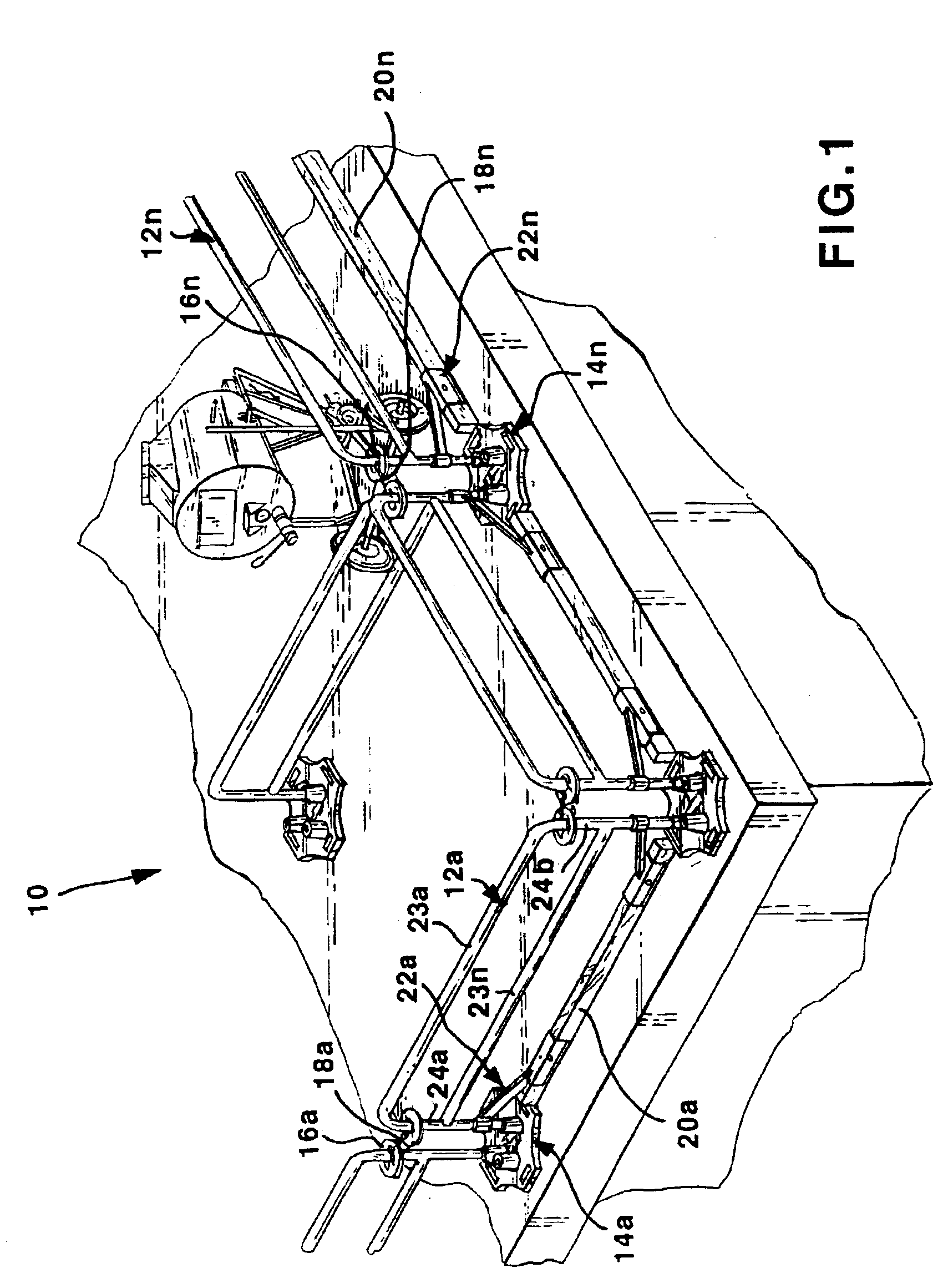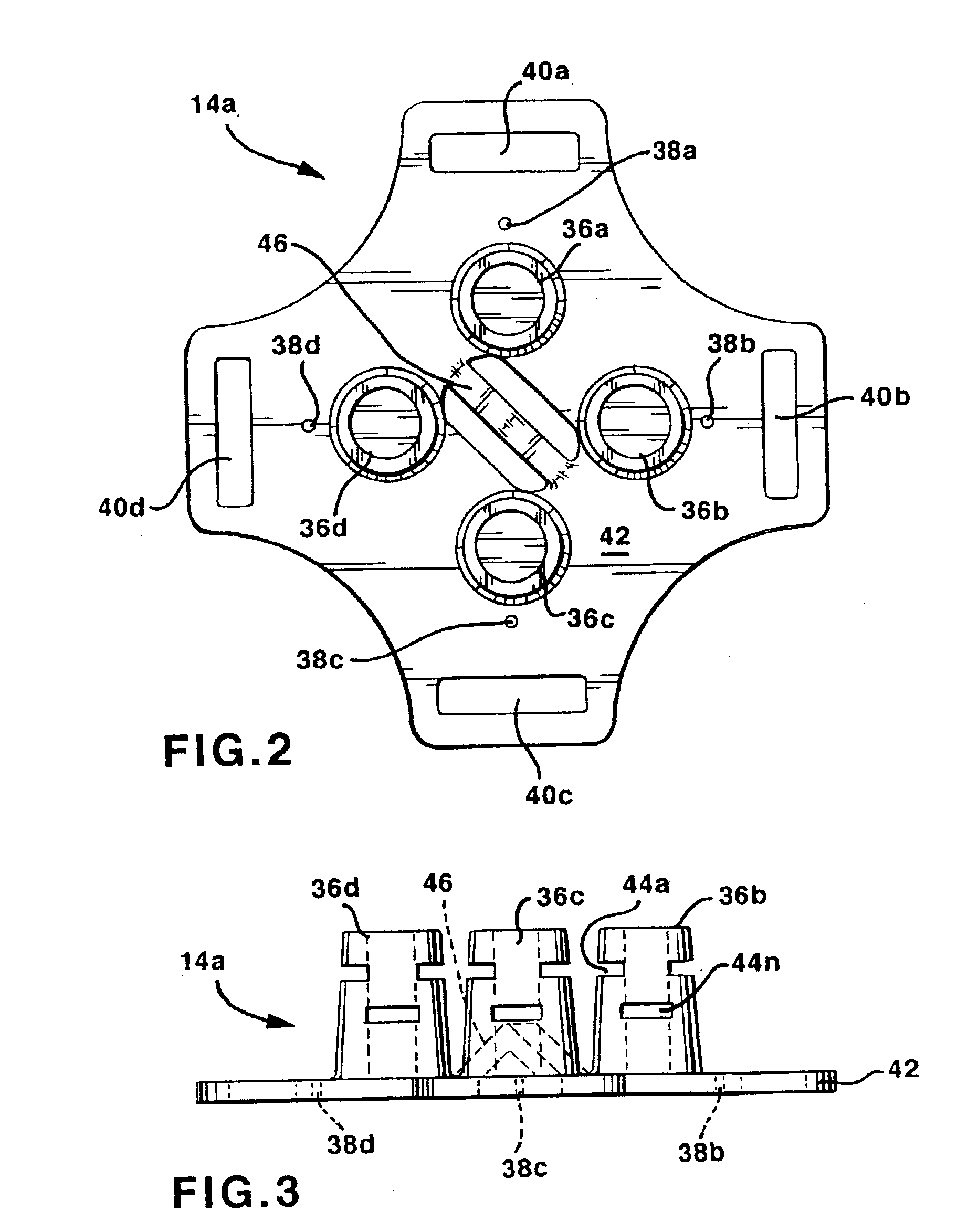Gate section and base for a safety rail system
- Summary
- Abstract
- Description
- Claims
- Application Information
AI Technical Summary
Benefits of technology
Problems solved by technology
Method used
Image
Examples
Embodiment Construction
FIG. 1 illustrates a perspective view of a safety rail system 10. This illustration shows the safety rail system 10 assembled on a rooftop in a random configuration. The safety rail system 10 is comprised of a plurality of rail sections 12a-12n, a plurality of bases 14a-14n, a plurality of rail lock donuts 16a-16n, a plurality of securing chains 18a-18n, and a plurality of toe boards 20a-20n used in conjunction with a plurality of toe board receivers 22a-22n. Each component will be later described in detail with reference to the following figures.
FIG. 2 illustrates a top view of a base 14a, and FIG. 3 illustrates a side view of base 14a. The bases 14a-14n weigh between 100-120 lbs. and are cast iron or welded plate and tube to support rail sections 12a-12n without tipping. Each base 14a-14n is constructed in the same manner having identical parts including a planar portion 42 with cutouts 40a-40d on four opposing sides creating built-in handles for transporting it. There is also a c...
PUM
 Login to View More
Login to View More Abstract
Description
Claims
Application Information
 Login to View More
Login to View More - R&D
- Intellectual Property
- Life Sciences
- Materials
- Tech Scout
- Unparalleled Data Quality
- Higher Quality Content
- 60% Fewer Hallucinations
Browse by: Latest US Patents, China's latest patents, Technical Efficacy Thesaurus, Application Domain, Technology Topic, Popular Technical Reports.
© 2025 PatSnap. All rights reserved.Legal|Privacy policy|Modern Slavery Act Transparency Statement|Sitemap|About US| Contact US: help@patsnap.com



